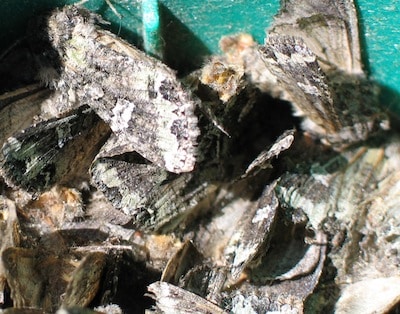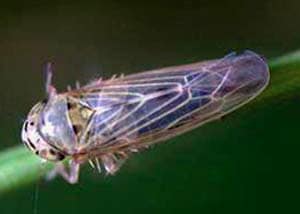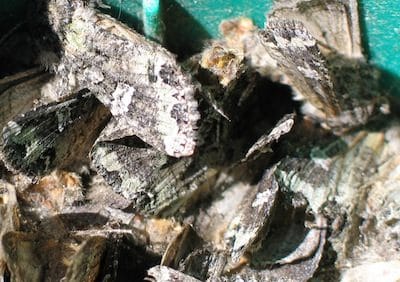

Lygus: Insecticide control at the bud stage is rarely effective or economical even when counts are 15-20 per 10 sweeps. Under good growing conditions, canola can grow through this early damage without any yield loss. And research has shown that in some cases canola can actually yield more if some early bud feeding occurs. This feeding can instigate a response by the plant to produce even more buds.
Lygus control at the bud stage may be warranted if all buds are being damaged and the crop isn’t coming into flower. Otherwise hold off on spraying and be ready to take action at the pod stage if necessary. Click here for more.
Bertha armyworm: Adult moth counts are moderate to high levels in some traps in Manitoba and Saskatchewan as of the first week of July, and these numbers will likely increase as trapping continues. Moth counts provide a regional risk assessment. If you’re in an area where several traps show high adult moth counts, this should give extra impetus to scout all fields in that area. Peak adult emergence usually occurs by about mid-July and larvae from the earliest emerging moths will start to hatch later in July. Areas with low adult counts can still have economic damage from larvae.
Leafhoppers have been noticed at higher than usual numbers at locations across the Prairies. Leafhoppers can carry aster yellows phytoplasma, but the percentage of the population carrying it tends to be quite low. While the insect prefers to feed on cereals, they will feed on canola and carriers will transfer the phytoplasma to canola plants. Click here for more.

